Beef tongue in aspic à la Russe for your holiday table (RECIPE)
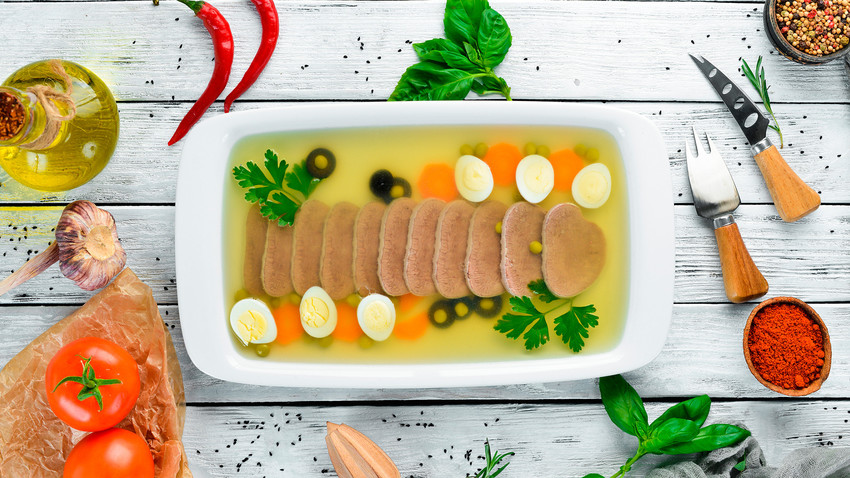
Cook this appetizer and decorate it with eggs, carrots or canned peas to your taste.
Legion MediaActually beef tongue or zalivnoye (zalivnoy yazyk) is a Russian-French jellied dish, that was the product of French chefs living in Russia, and who modified many dishes of the Russian national cuisine.
Before the early 19th century, dishes in aspic didn’t exist. Instead, Russian cuisine had different jellies of meat and fish that didn’t have an attractive ceremonial appearance. French chefs working in Russia perfected the jellied dishes, making them into new dishes in aspic.
For example, they began to choose the best, most delicious pieces of fish and meat, and cut them in an original and beautiful way. Then, they created an exceptionally clear, almost transparent broth to help enhance the sublimity of the dish. Also, aspic dishes began to be served on special oval, oblong and rectangular plates to emphasise their ceremonial and festive role.
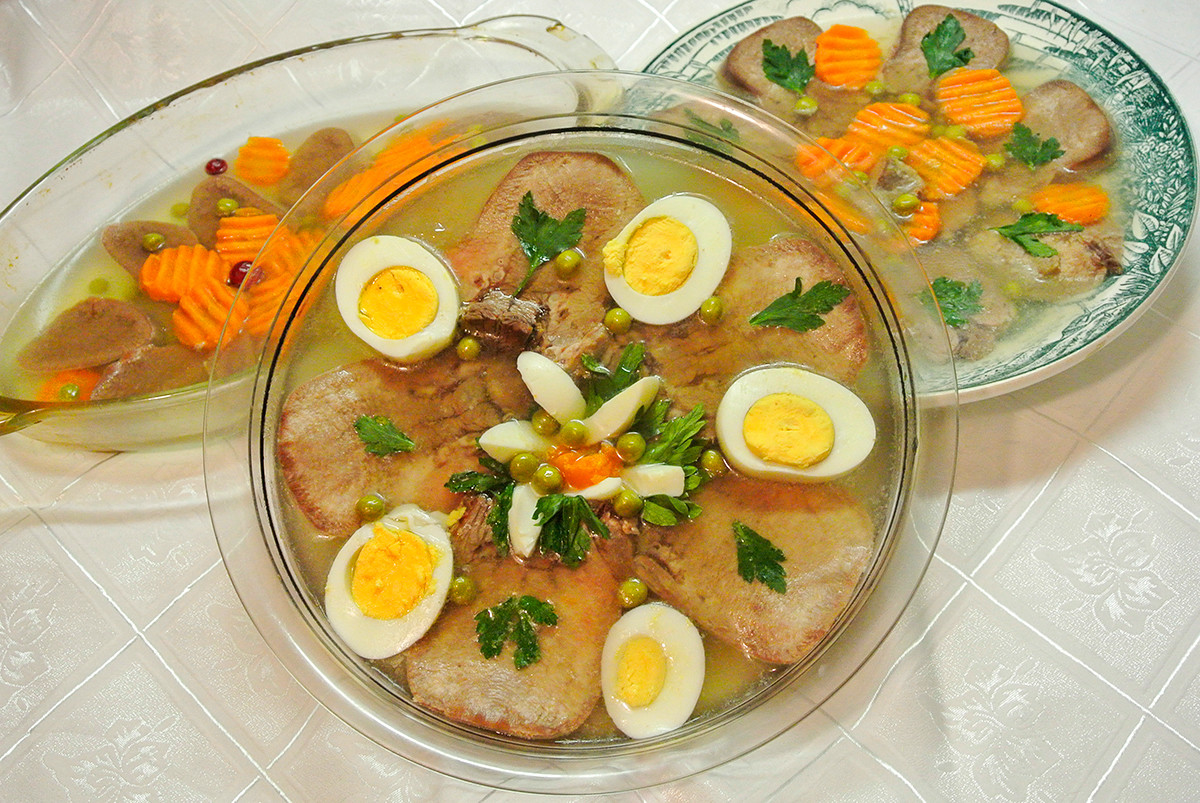
It's worth mentioning that such dishes were prepared from fish, meat and vegetables. Meat in aspic is prepared from beef tongue, veal, pork, ham, poultry and fowl (chicken, turkey, duck, hazel grouses, and partridges). These are cut into thin pieces, decorated with slices of carrots, eggs, lemon, canned peas, fresh cucumbers, apples and green leaves. The broth in which fish, meat or vegetables were cooked is used to make jelly. The amount of gelatin that must be put in the broth depends on the strength of the broth and the kind of fish or meat used.
Ingredients:
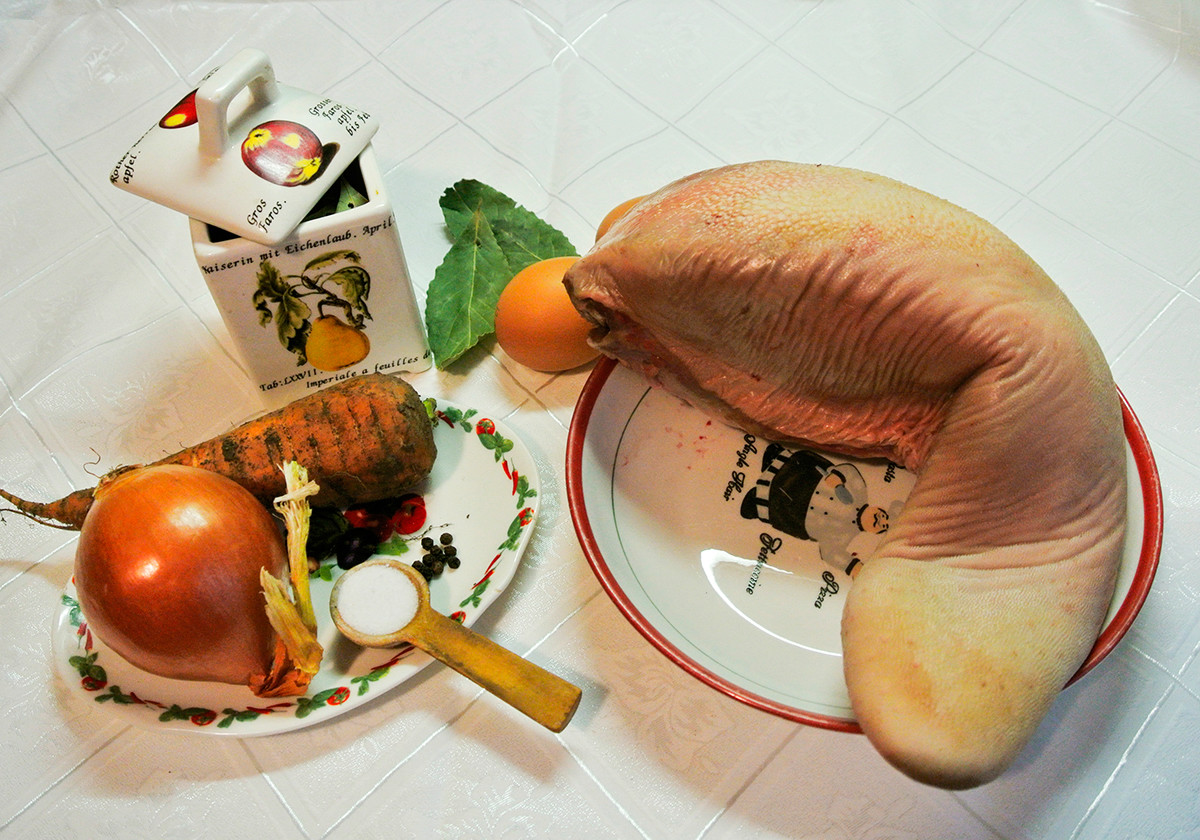
- Beef tongue up to 1.5 kg
- Onion - 1
- Large carrot - 1
- Bay leaf - 2
- Salt - 1.5 tablespoon
- Pepper peas - 8
- Gelatin - 25 gr
- Chicken or any other broth - 800 ml
For decoration (optional):
- Canned peas
- Eggs
- Parsley
- Cranberry
Cooking:
1. Wash the beef tongue well. Put it in a large saucepan and pour cold water. Turn on the heat and wait for the water to boil. When the water boils, turn off the heat and drain the water. Then fill the saucepan with clean cold water and turn on the heat again.
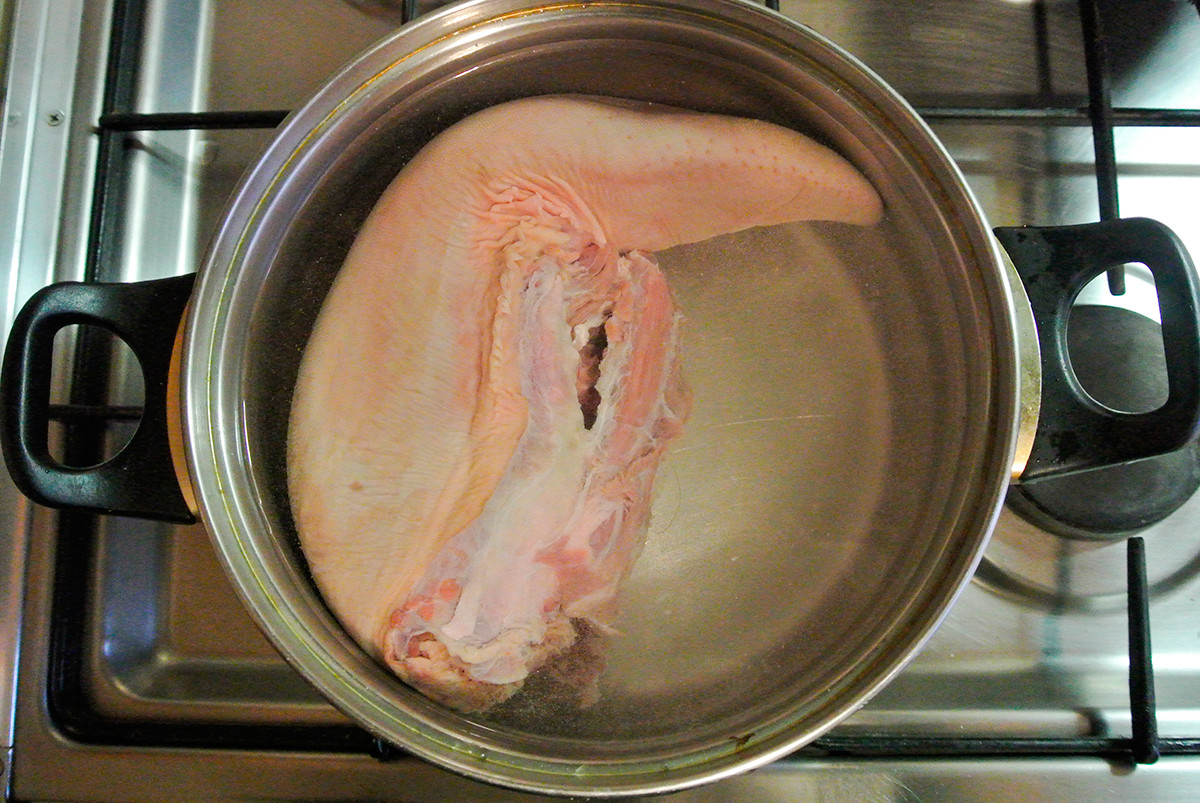
2. Wash and peel carrot and onion. When the water boils again, add the vegetables and pepper peas to the boiling beef tongue. Reduce to simmer and cook for 1.5 hours. After half an hour, take the vegetables out.
3. At this time, mix 100 g of cold boiled water and 25 g of gelatin in a deep plate. Let it sit for a while.
4. After 1.5 hours, add salt and 2 bay leaves to the saucepan. Simmer the beef tongue for another half an hour.
5. In a separate saucepan cook chicken (or any other) broth. Salt and pepper to taste. You can add some seasonings and herbs for the meat, and a bay leaf. This will be our future jelly. Of course, you can use beef tongue broth for the jelly, but chicken (or any other) broth will be more dietary. As soon as the broth is ready, pour it through the gauze, cool to room temperature and add soaked gelatin. Stir the broth until the gelatin is completely dissolved.
6. When the time is up, remove the tongue from the pot, pour cold water on it and immediately remove the skin from the tongue. It peels off perfectly, like a mandarin skin.
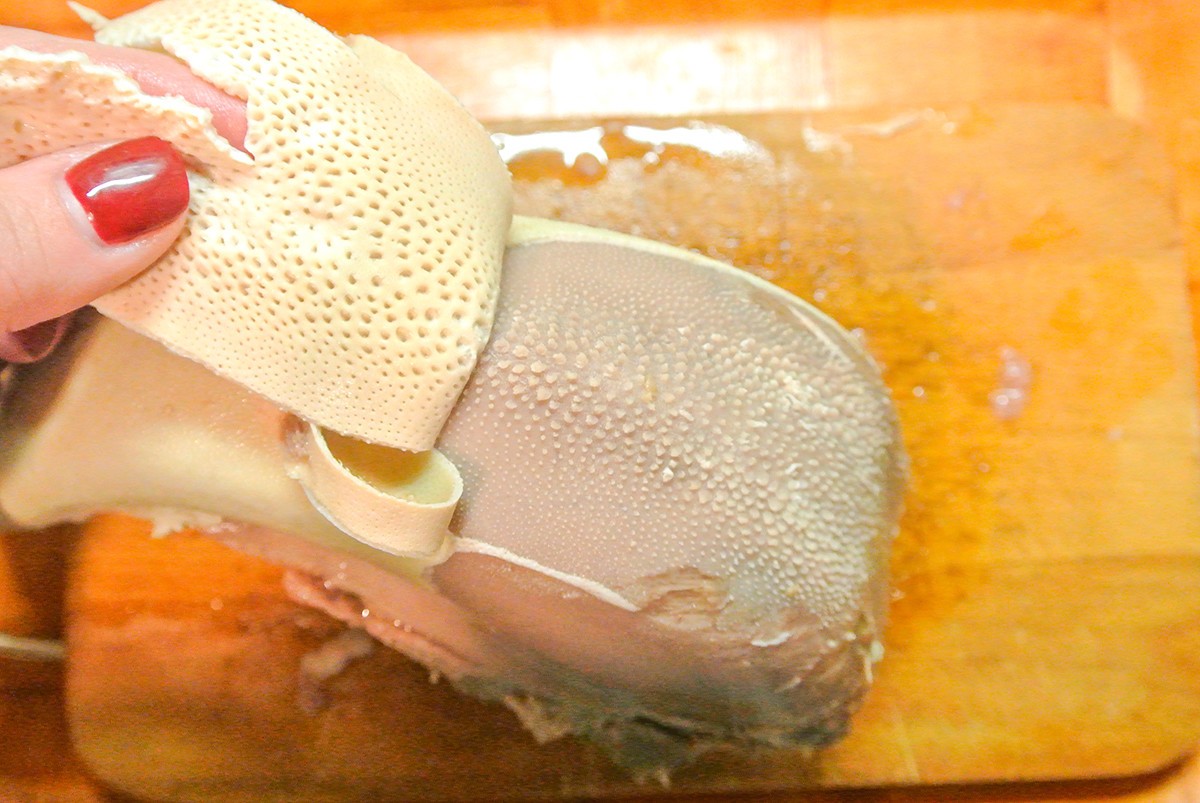
7. After that, cut the tongue into thin slices. It’s also high time you prepared the decoration for the dish: cut carrot and eggs into thin circles, take out the canned peas, parsley, and cranberries on the plate.
8. Put the slices of beef tongue in a deep plate or some deep dish. Decorate with the slices of carrot, eggs, and canned peas in a beautiful way.
9. Carefully, in small stages using a tablespoon, pour the gelatin dissolved in broth over the ultimate ornament. Put the dish in a refrigerator for a few hours or for the night.
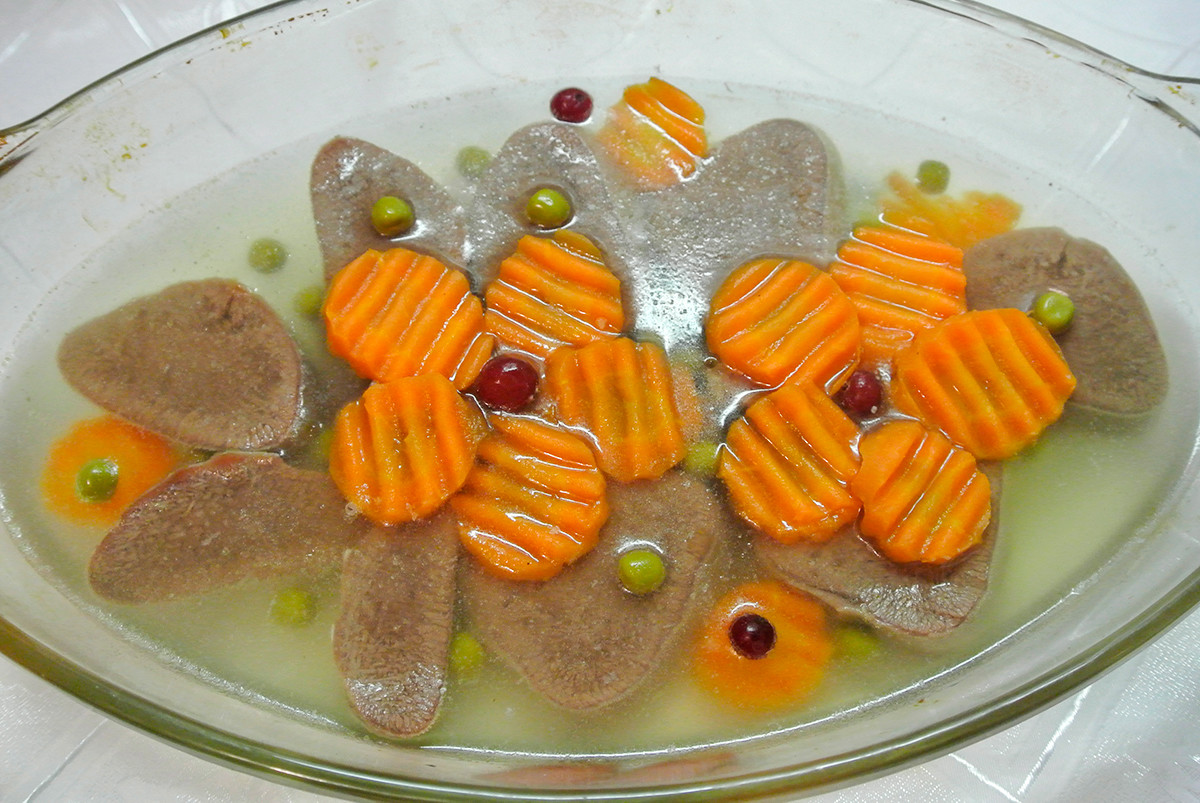
10. The beef tongue in aspic is ready to be sliced and served on a festive table. Priyatnogo appetita!
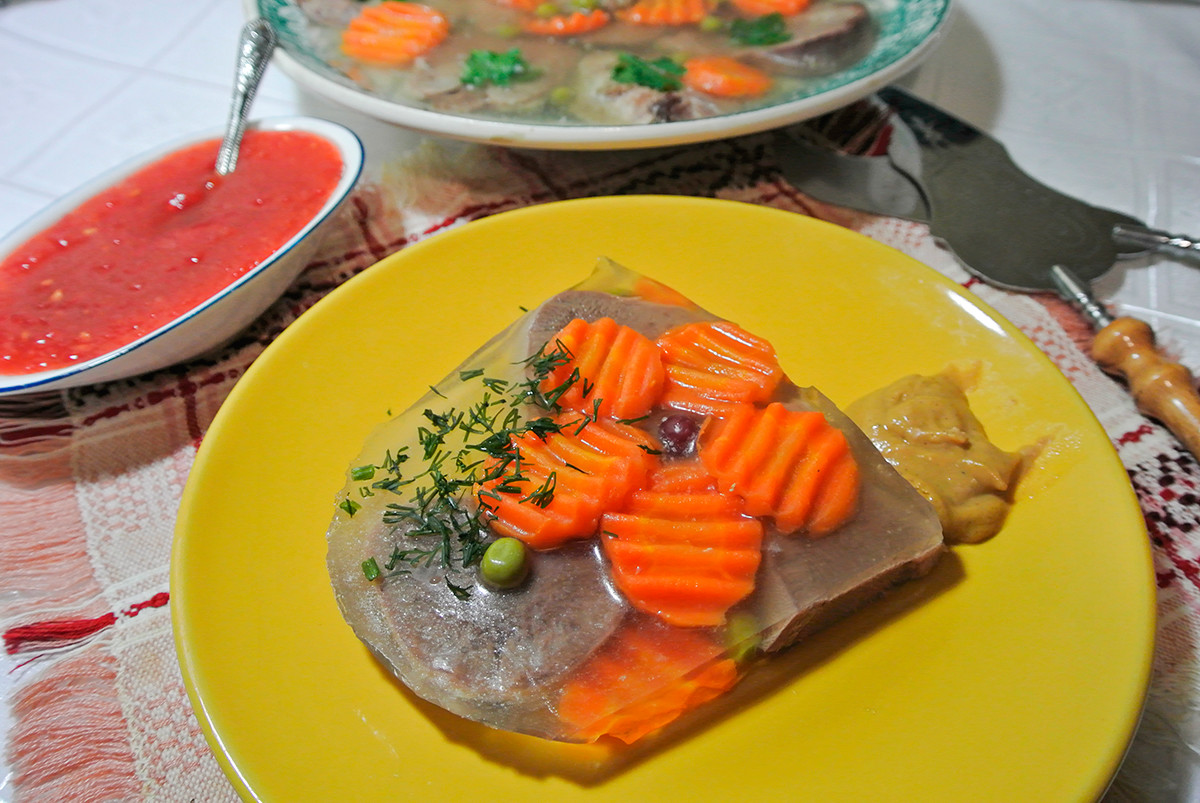
READ MORE: Oven-braised veal stew with cherries: A dish from Anton Chekhov’s times (RECIPE)
If using any of Russia Beyond's content, partly or in full, always provide an active hyperlink to the original material.
Subscribe
to our newsletter!
Get the week's best stories straight to your inbox